One day, mid-April 2017, S Nandagopal tried to reach me. I was away from Chennai. A day later I heard he had died. It was Sankranti, a joyful day, ending with his unexpected departure, Kala, his wife, told me. Why had he called, I wondered, with deep regret. Kala said, “He probably wanted to tell you that Paniker’s work sold at Osian’s auction for a record.” A whopping ₹1.8 crore, in fact, from his Words and Symbols series, acknowledged as one of the finest paintings of Indian modernism sold that month. It was 40 years since KCS Paniker, Nandagopal’s father, eminent artist, lead proponent of the Madras Movement, and founder of Cholamandal Artists’ Village, passed in 1977. Art appreciates in value, but what of the artist?
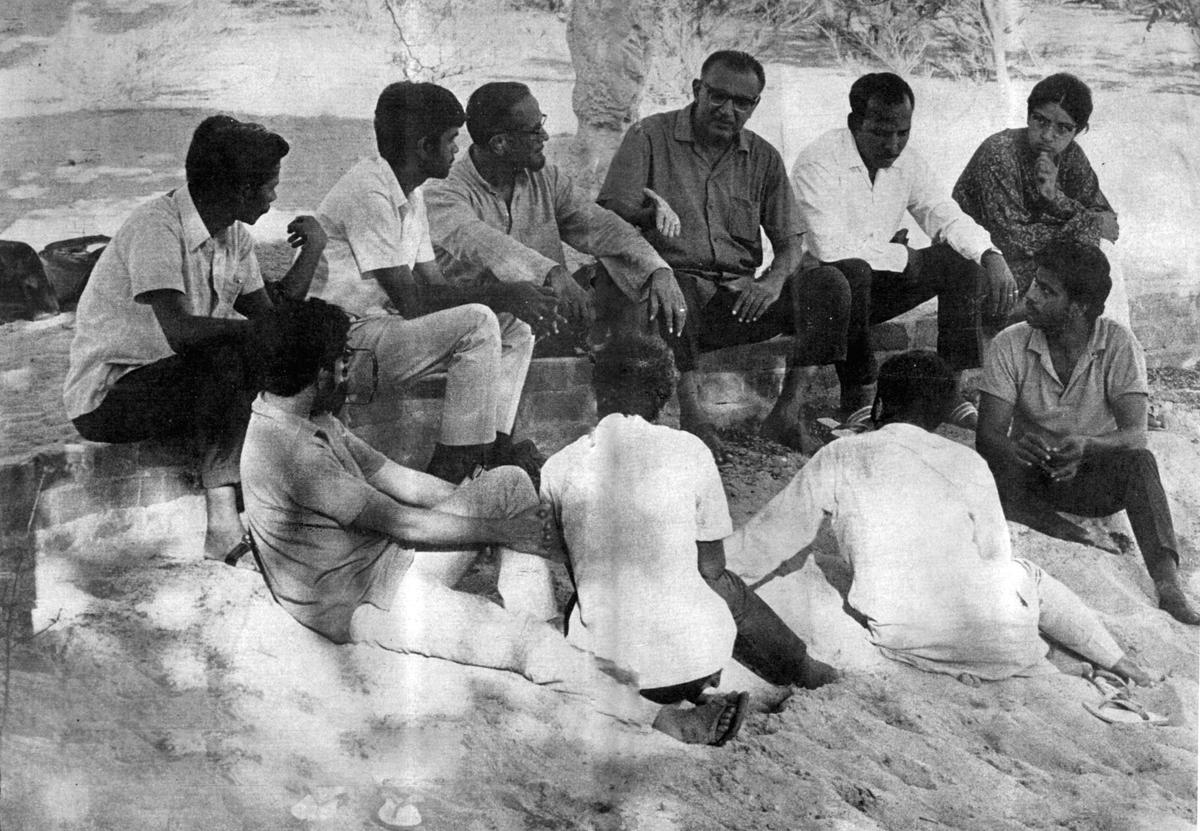
Early days – Cholamandal
| Photo Credit:
SPECIAL ARRANGEMENT
Cholamandal, an ongoing show by Ashvita Gallery in the city features 22 artists from the group and 51 works, half from Ashvita’s non-commercial collection, and the rest on loan from private galleries and collectors. Curator Ashvin Rajagopalan emphasises, “The reason we did this show is because it is relevant today. The problem that Paniker addressed in the 1960s is a continuing problem: How do artists survive?”
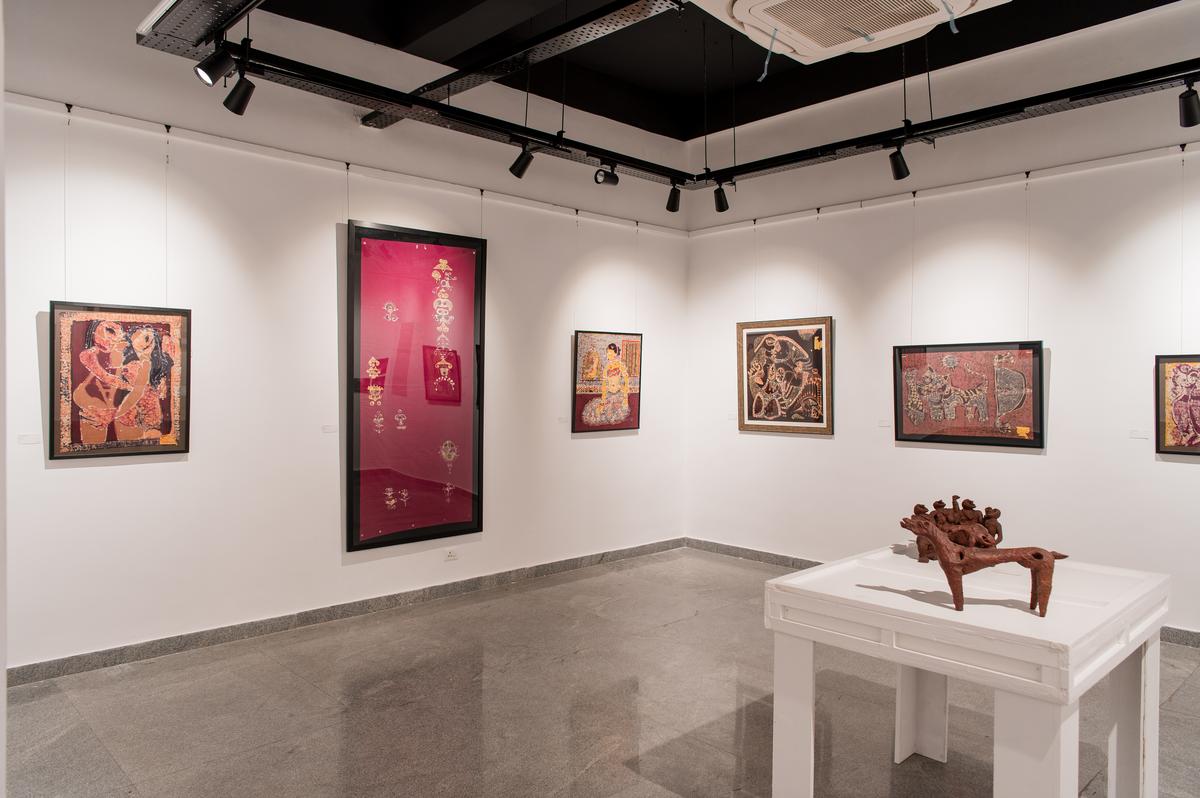
Batiks at Cholamandal exhibition
| Photo Credit:
SHANTANU KRISHNAN
Art, industry, craft and regional modernism
“I was really intrigued by how they combined art, craft and batik”, says Sruthi Srinivasan, co-curator, Ashvita. We see humble scenes from everyday life — C Dakshinamoorthy’s cat with a fish, M Senathipathi’s woman doing her hair in front of a tiny folding mirror, and KV Haridasan’s Gustav Klimt-ish Embracing Couple. The craft is definitive, unquestionably Indian, exquisitely detailed.
Beyond ‘art for art’s sake’, monetary returns are needed, not just for success but sustenance. The mid-century Madras artists faced another confounding dilemma — how to be a true modern “Indian” artist. Art critic Ludwig Goldscheider wrote to Paniker in 1954, after his one-man show in London, acknowledging how the Indian artist has to surpass Western teachings, go beyond traditional styles of Ajanta, Tanjore and miniature paintings, and then emerge a modern master with a genuine Indian essence. It was a tough ask.

K.S. Gopal
| Photo Credit:
Special Arrangement
Paniker, the visionary with two decades of experience, resolved these anxieties in one masterful stroke. The Artists Handicraft Association founded in 1963 paved the way for Cholamandal Artists’ Village in 1966 with his credo, “The greatest craftsmen are the greatest artists.” Art and craft would go hand in hand, as they always had in India, with the rigorous training at the Government College of Arts & Crafts (now Madras College of Art) — the oldest surviving art school in the country.
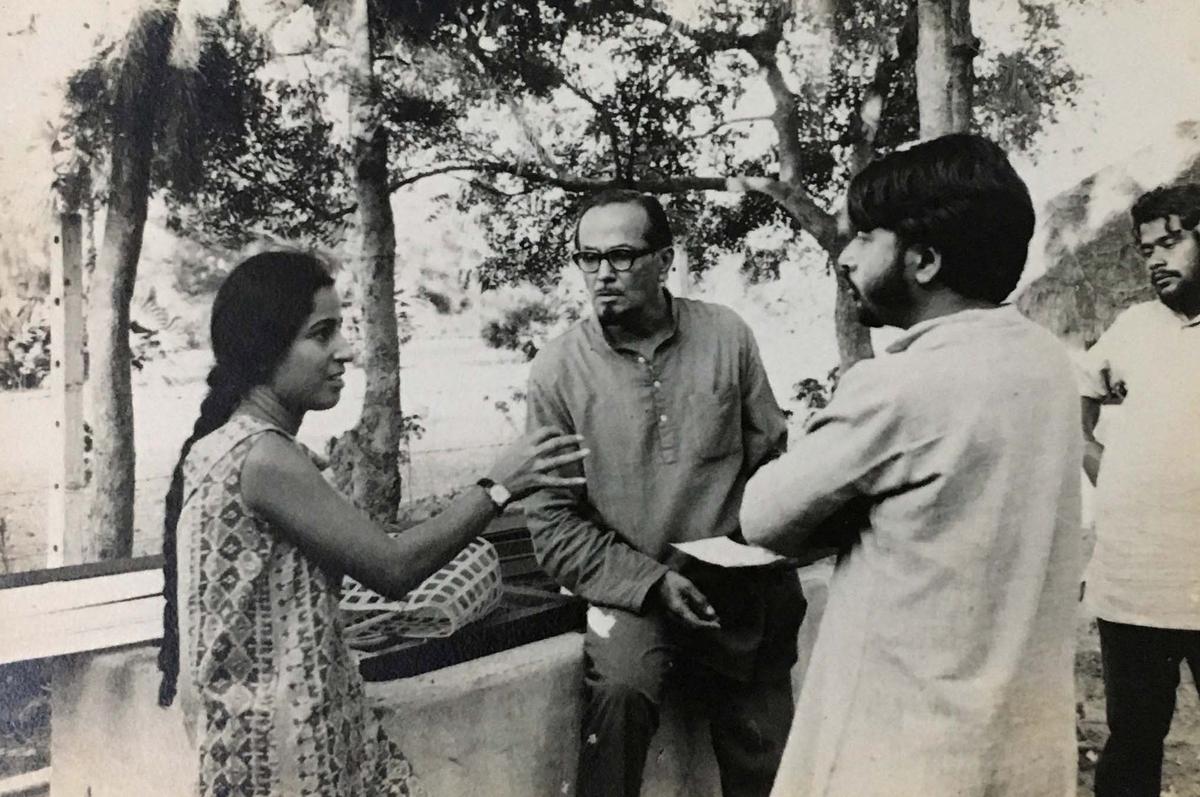
Cholamandal – the early days
| Photo Credit:
Special Arrangement
TACEL, Tamil Nadu Ceramics Limited, established in 1974 by the TN Government in Vriddhachalam, fostered a local ceramic hub. In Madras, artist S Kanniappan set up Tacel Art Pottery, reputed for its studio pottery. These mid-century modern ceramic pieces with abstract motifs are unique and central to the Indian modernist landscape. Craft, practised across generations, sets this exhibition apart but also begs the questions: Is there a high art and low art? Does art get devalued when it is commercialised?
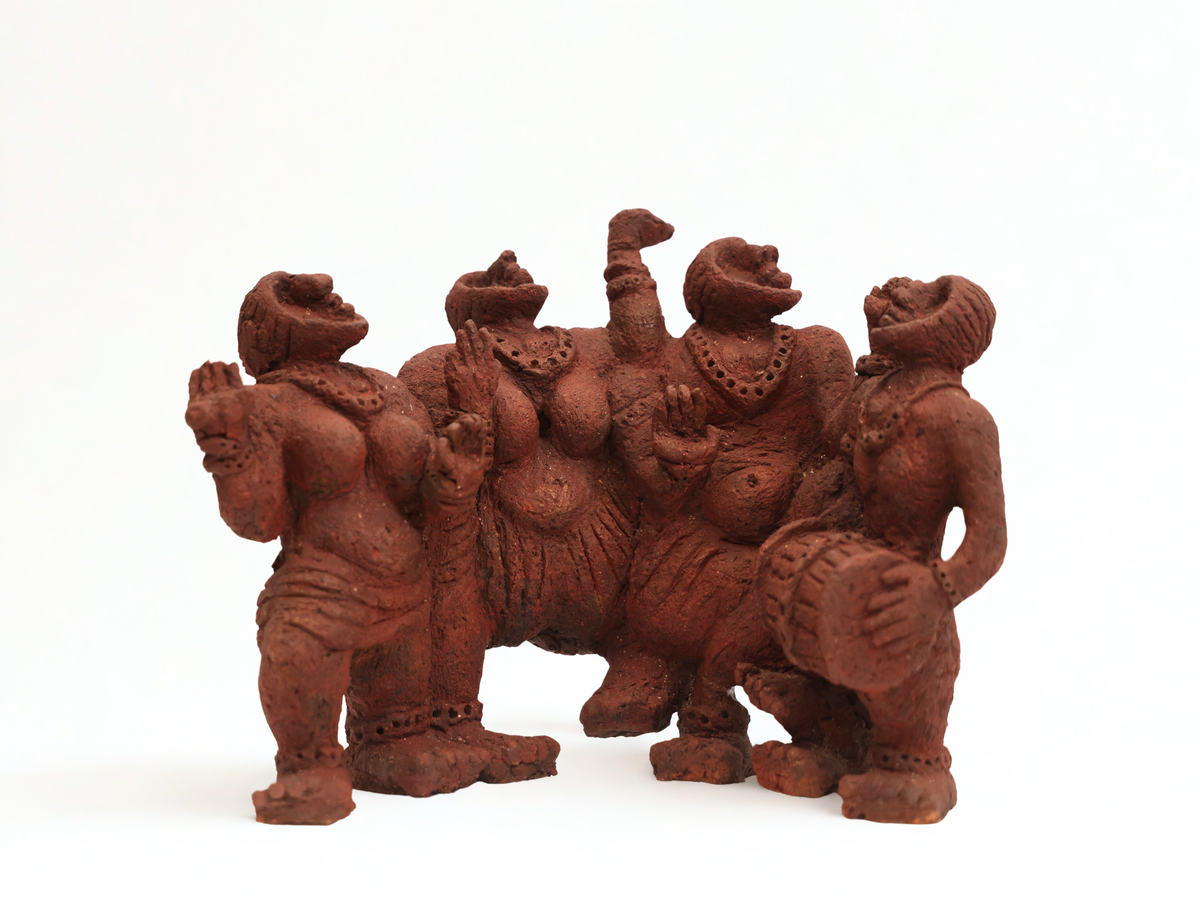
TRP Mookiah
| Photo Credit:
Special Arrangement
A village in the city, a new identity
The Akademi spurred the artists’ village, which, in a surreal way comes full circle at the new Lalit Kala with this show. In the 1960s, it was in a three-storied building in Vepery, near the College of Arts. Paniker allowed the artists to camp overnight. A camaraderie began that flowed into the idea of a commune: a place to live and work in an environment that supports and energises creative exchanges freely.
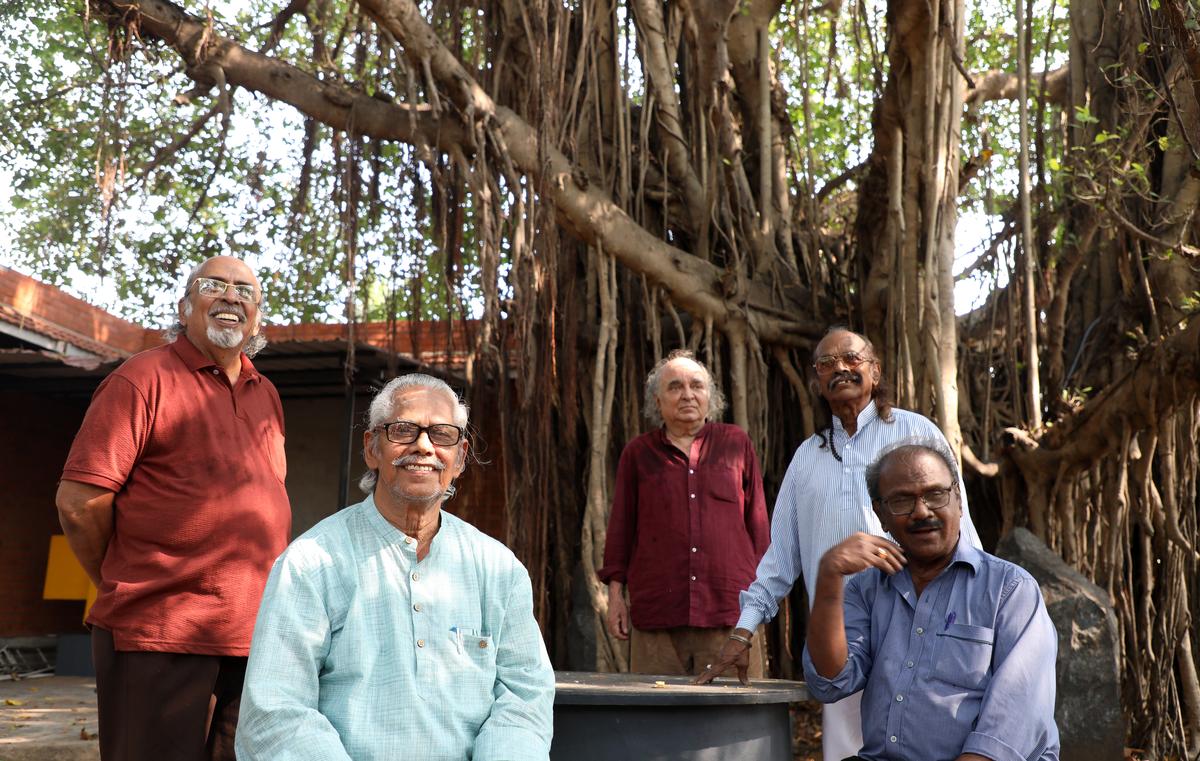
Senior artists P Gopinath, M. Senathipathi, C. Douglas, P.S Nandhan and Selvaraj at Cholamandal art village
| Photo Credit:
Akhila Easwaran
Why at all, did these artists turn to abstraction? In his essay Why I paint, Paniker writes of how he came across a maths student’s notebook full of symbols, equations and geometric notations. The imagery of writing presented the possibility of expressions that were agnostic. Gopinath does this with vivid colours and geometric forms, Haridasan with his esoteric Neo Tantric expression, while Akkitham Narayanan renders sophisticated hues in calligraphic gestures and subtle geometry. Without meaning attached to symbols, we only see images. It is a path that has allowed the artist’s genuine expressions, free from realist associations, using symbols without specific leanings. Rajagopalan hints at another level, suggesting, “Paniker wanted to create a space where art should thrive, a utopian space of no language, no caste, no state. Which is why, when this show came together — I had this ‘aha’ moment — If you take words and make them into design, it does not have meaning anymore.”
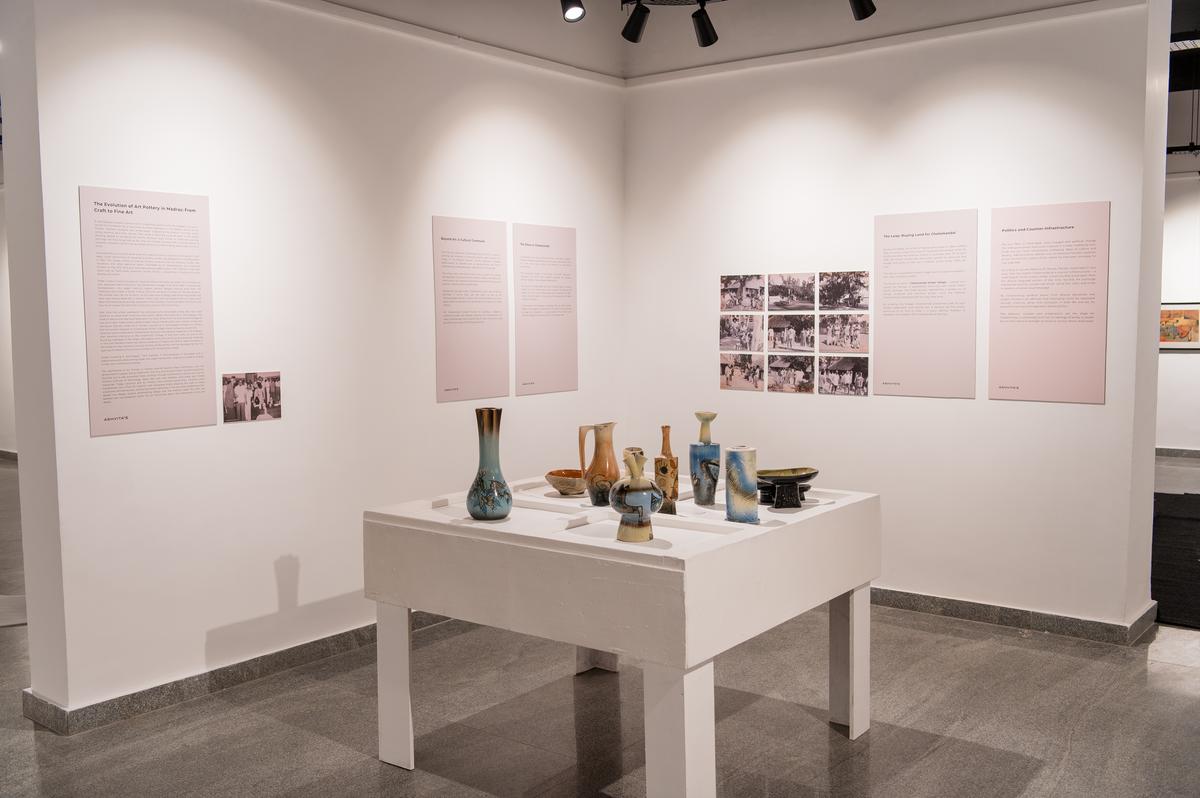
A distinctive style emerged — one that drew from indigenous sources of tribal, folk, mythology, and tradition evolving into its own modern element as we see in SG Vasudev’s copper relief Tree of Life from 1977. ‘Madras Metaphor’ a term coined by critic SV Vasudevan in 1991 is evident in Nandagopal’s Acrobat on Wheel that recalls tribal art forms, the acrobat balanced on a modern mechanical wheel — a metaphor of the new carrying the old. At their idyllic artists’ village by the sea, each artist forged their own identity, united by a love of line. Cholamandal brings these stories together strung like uneven gems, each with their own sparkle.
Cholamandal is on at Lalit Kala Akademi Chennai till September 25.
Published – September 22, 2025 12:56 pm IST
